5 Great Reasons to Try Rock Rose in Your Garden
Want a plant that is going to add bright pink flowers to your Texas garden? Look no farther than Rock Rose (Pavonia lasiopetala). This is a beautiful shrub native to the Edwards Plateau and Trans Pecos regions of Texas. Not to be confused with the Mediterranean flowers that also go by the name Rock Rose!
Here it is growing happily in a native plant garden in San Antonio with no supplemental water. If you’re looking for a low maintenance plant, this is the plant for you. No garden? No problem! I have it growing in a big container pot on my patio.
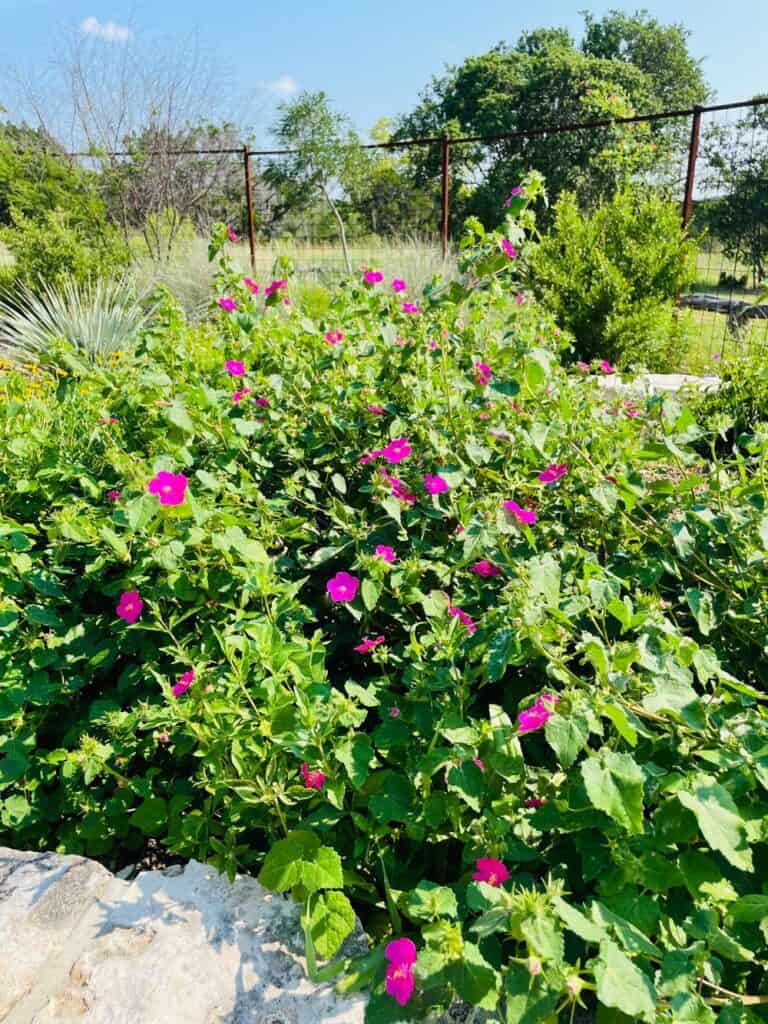
5 Great Reasons to Grow Rock Rose in Your Garden
1. Prolific blooms from late spring until frost
This plant starts blooming in the spring and goes through November. There are not too many plants that have that long of a bloom period.
2. Unique pink flower
The five petal pink rock rose flower is reminiscent of hibiscus or Rose Mallow with its saucer-shaped flowers. The pop of color makes it a standout in a Texas garden.
Want more Texas native plant ideas? Check out my Top 15 Texas Native Plants to Grow.
3. Drought tolerant
I have seen Pavonia lasiopetala grow well in full sun with little additional water. It is a hardy, drought tolerant plant once its roots are established. It can grow in full sun or part shade and looks great as a landscaping plant or in rock gardens.
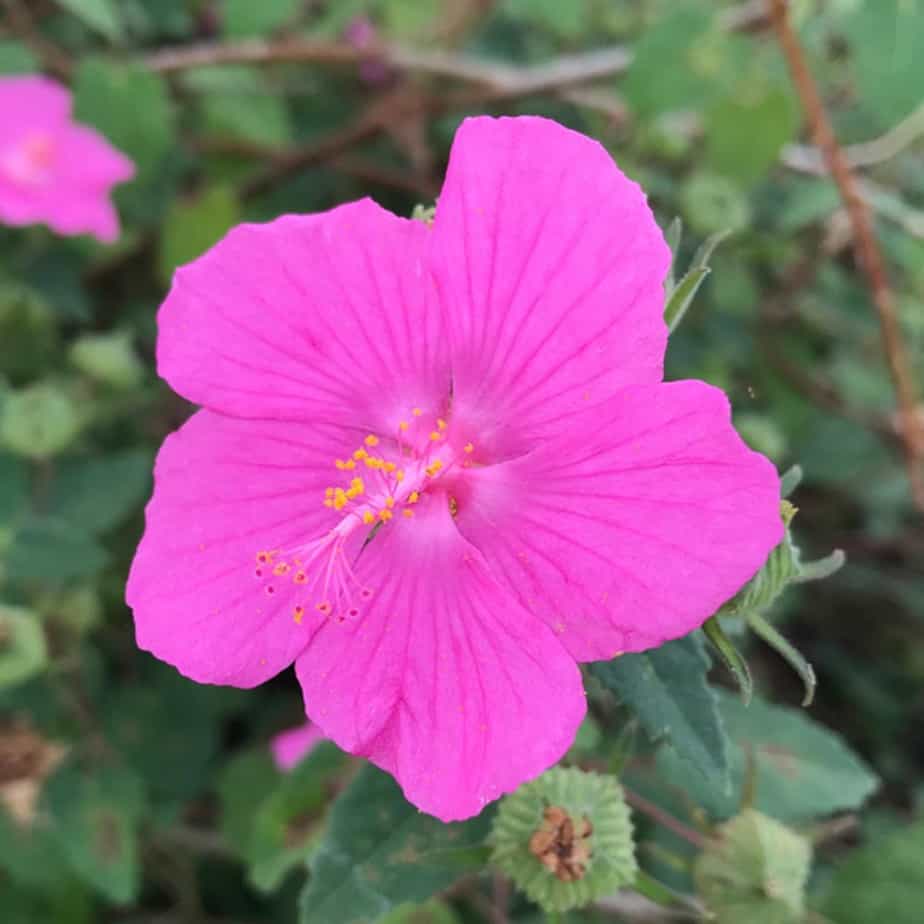
4. Great pollinator plant
In addition to the flowers being beautiful and unique, they also attract hummingbirds and butterflies. I always recommend prioritizing great nectar plants and host plants for your garden. Even if you don’t have a garden, this is a good one to grow in a pot. In fact, I have it growing in a big pot in my yard.
5. Reseeds easily
The plant is a short lived perennial. It only tends to live a few years, however it readily reseeds and the baby plants take over when the mother plant dies.
How to Find Rock Rose at the Nursery
Rock Rose is often carried by nurseries that specialize in Texas natives. I’ve even seen it at my local Lowes.
Be sure to write down this scientific name and bring it with you to make sure you get the right plant:
Scientific Name: Pavonia lasiopetala
While a plant can have several common names, it only has one scientific (Latin) name. Knowing this is helpful, because there are a number of other plants that go by the name “Rock Rose” that are not Pavonia lasiopetala and not native to Texas.
The other Rockrose plants are native to the Mediterranean and are in the genus Cistus. Their scientific names will start with “Cistus“, not “Pavonia“. Something to look out for when shopping at the nursery!
Common Name
While I’ve most commonly heard it referred to as Rock Rose, this Texas Hill Country native also goes by Wright Pavonia and Texas Swamp Mallow. Pavonia lasiopetala is part of the Mallow family, which gives it this common name.
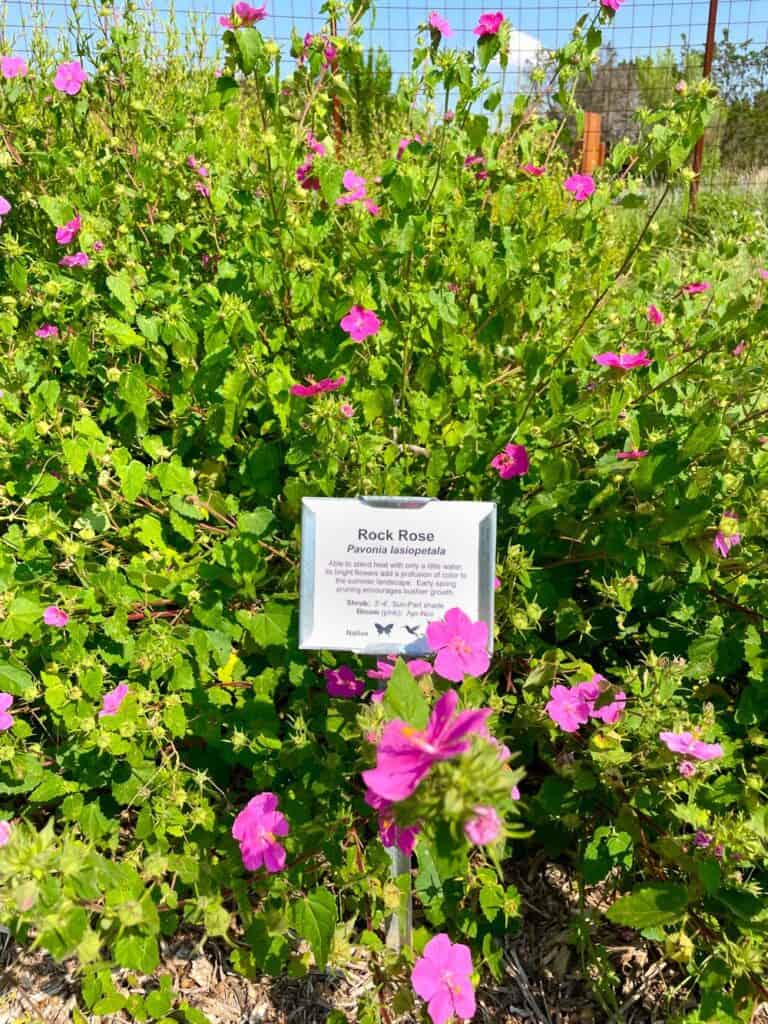
How to Grow Rock Rose
Rockrose is not a very fussy plant and does well in a variety of soils including poor soil. You can even try growing it in a big pot! Check out my rock rose growing in a part sun area on my backyard patio below.
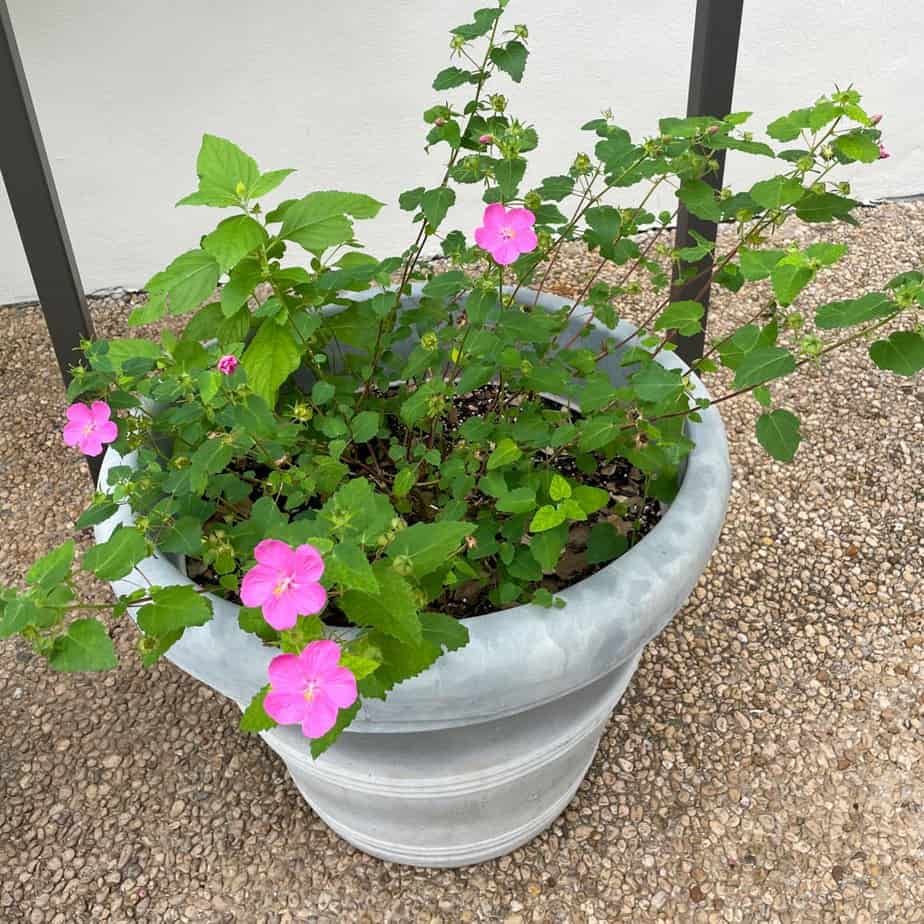
Watering Rock Rose
Keep rock rose watered once a week until its roots are established, and make sure it is in well drained soil. This plant likes soil on the drier side, so don’t overwater it while you are getting it established. After a couple months, it will need next to no supplemental water.
These plants can get powdery mildew, especially if they don’t get enough sun.
Pruning Rock Rose
This plant can grow up to 4 feet tall and 3 feet wide, so plan accordingly when planting it in your garden! It can get leggy, especially if it is not in enough sun. Prune it occasionally to help it keep its shape.
This is not an evergreen shrub. It will typically die back in the winter. You can cut it back to about a foot above the ground in February.
Propagating Rock Rose
You can dig up some of the baby plants or take softwood cuttings from the new growth in the spring. Apply a little root hormone and then repot.
You can also collect seeds from the seed pods once they turn brown.
Pin this plant image to remember it for later!
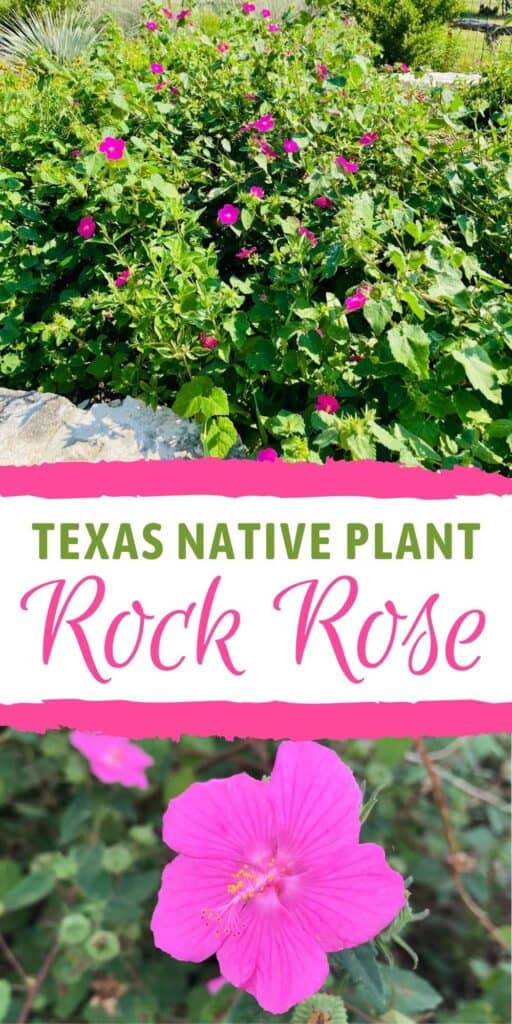

Welcome to Native Backyards! I’m Haeley from San Antonio, Texas, and I want to help you grow more native plants.
I have seen firsthand how the right plants can bring your yard to life with butterflies, bees, and birds. I’ve transformed my yard with Texas natives and I’m excited to share what I’ve learned with you.
Join my newsletter here! – each week I’ll send you helpful tips to make your native plant garden a reality!
Want to learn more about me and my garden? Check out my About page!

Everything I’ve read (Google search from more official sources) about Rock Roses is that they’re deer resistant. Deer will try to eat it, but the leaf becomes a sticky fragrant mess when mashed and deer don’t like that.